 by "ttyymmnn" (ttyymmnn)
by "ttyymmnn" (ttyymmnn)
Published 02/24/2017 at 12:35
 by "ttyymmnn" (ttyymmnn)
by "ttyymmnn" (ttyymmnn)
Published 02/24/2017 at 12:35
Tags: planelopnik history
; Planelopnik
STARS: 9
Welcome to This Date in Aviation History , getting you caught up on milestones, important historical events and people in aviation from February 22 through February 24.
!!! UNKNOWN CONTENT TYPE !!!
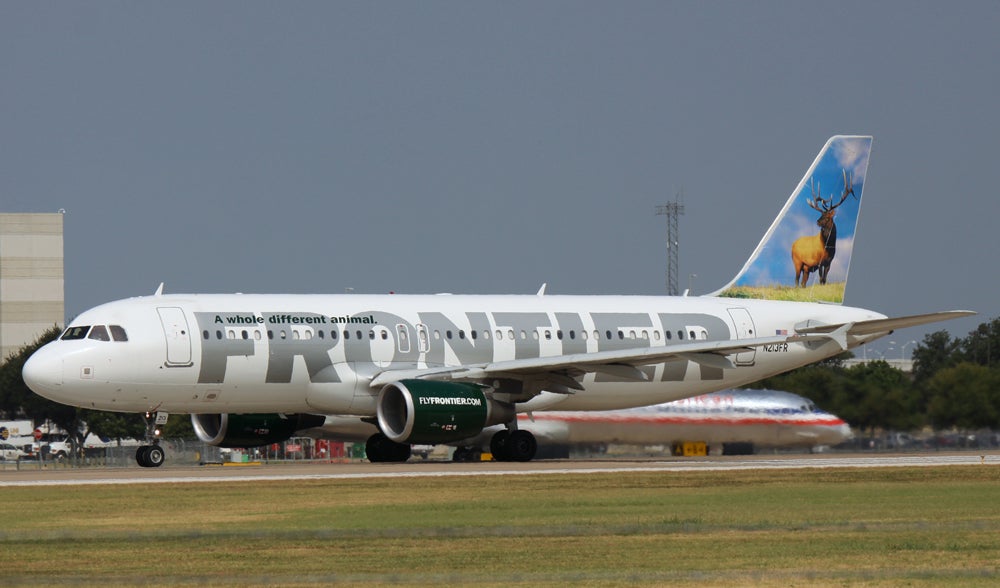
February 22, 1987 – The first flight of the Airbus A320. By the mid-1960s, the international airliner industry was dominated by American companies Boeing , McDonnell Douglas and Lockheed . European companies had developed some innovative aircraft, but production runs were small, and there was no sign of European companies making a significant entry into the airliner market. But by the late 1960s, airliner manufacturers in France, England and West Germany, with critical government backing, dedicated themselves to challenging American dominance, and Airbus Industrie was formed in 1970 (the name Airbus is a generic term for an airliner, and it was first coined by Hawker Siddeley in 1959 for a passenger version of the Armstrong Whitworth AW.660 Argosy ). The first aircraft to come out of the partnership was the A300 , which took its maiden flight in 1972. It was the world’s first twin-engined widebody airliner and seated up to 266 passengers. But with relatively slow sales, it was clear that what was required for the developing European airliner industry was a smaller, short- to medium-range airliner with reduced seating capacity to feed passengers into larger hub airports. Thus, Airbus began considering an airliner that could compete directly with the widely popular Boeing 737 and McDonnell Douglas DC-9 . After considering a myriad of different configurations, Airbus focused on an airliner to satisfy the 125- to 180-seat market and powered by a pair of efficient CFM International high-bypass turbofan engines. In doing so, they actually envisioned three separate narrow-body, single-aisle airliners. The first to be developed was dubbed the A320, and it was in the middle of the passenger capacity range. Working with Delta Airlines, Airbus first planned for an airliner that could carry 150 passengers at a distance of 3,280 miles. They also planned for the airliner to be just under a foot wider than the Boeing 707 and 727 to increase its chances of competing successfully with the 737. It’s overall shape was also more aerodynamically efficient than the 737 and McDonnell Douglas MD-80 , and also slightly faster.
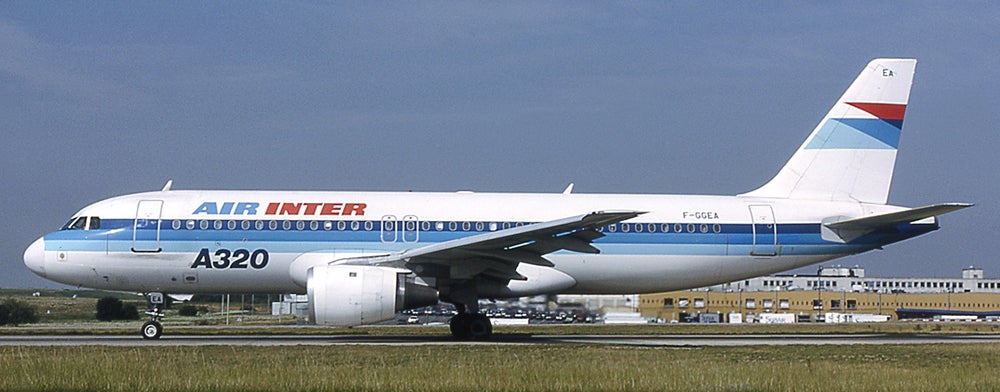
At its launch, the A320 was one of the world’s most advanced airliners and the first to employ digital fly-by-wire technology, something that had up to that time been been reserved for military aircraft. And, in another nod to military aircraft design, the A320 would eschew a traditional pilot’s yoke for a side joystick control. Even before the first A320 took to the skies, Airbus had more than 400 orders, with many more to come. With the launch of the A320 in 1988 with Air France, Airbus had firmly solidified its status as a major, world-class developer of commercial airliners. The first A320 was rolled out on February 14, 1987, and Air France took delivery of the first A320 on March 26, 1988. Adhering to the initial plan, the A320 was subsequently stretched into the A321 with accommodations for up to 236 passengers in a single-class configuration, and shortened into the A319 and the A318, with capacity for 156 and 132 passengers respectively. Further developments include the A320neo (new engine option) with more efficient engines and the addition of blended winglets , called Sharklets by Airbus, to increase range and decrease fuel consumption by as much as 4 percent. The Sharklets were then retrofitted to older airliners. The A320 is now the world’s best-selling single-aisle family of aircraft, and, as of January 1, 2017 , 13,067 aircraft of the A320 family have been ordered, with 7,442 delivered against a backlog of 5,685 airliners. A total of 7,122 are currently in service. (Photo by the author; Photo by Michel Gilliand via Wikimedia Commons )
!!! UNKNOWN CONTENT TYPE !!!
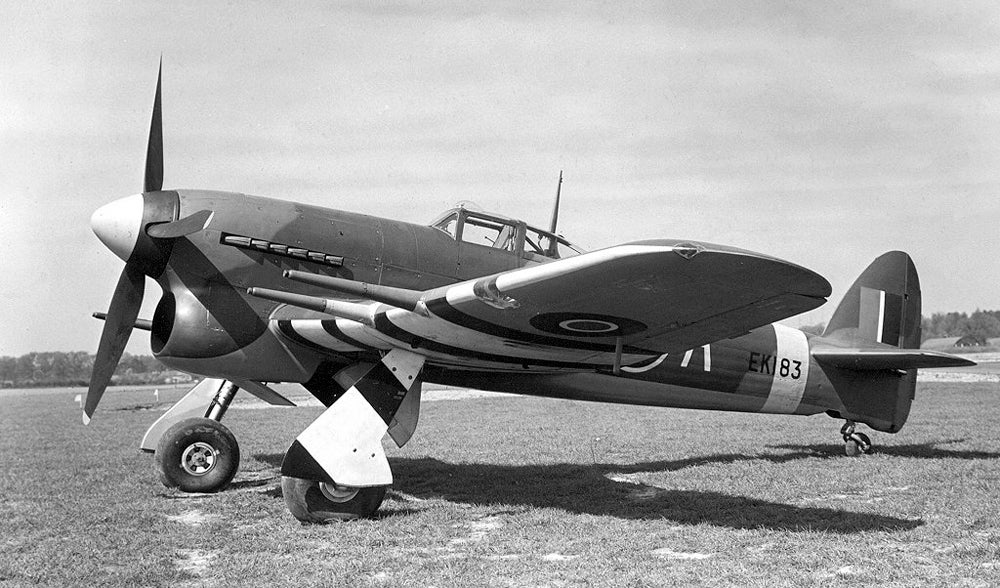
February 24, 1940 – The first flight of the Hawker Typhoon. The Hawker Hurricane was one of two British fighters that beame a symbol of the Battle of Britain , a 1930s-era fighter design that proved to be quite effective throughout the war. Though it wasn’t able to tussle with the high-flying German fighters, it proved devastatingly effective against low-flying German bombers. The Hurricane took its maiden flight in 1935, but even before it entered production in 1937, Hawker and design engineer Sydney Camm had already begun work on a more powerful successor. During the development of the new fighter, Hawker worked with two basic designs, both bearing a family resemblance to the Hurricane, though somewhat larger. One reason for the increase in size was to accommodate a massive engine, either the Napier Sabre H-24-cylinder or the Rolls-Royce X-24 Vulture . The Napier Sabre produced up to 3,500 hp in its later versions, and would become one of the most powerful inline piston engines in the world. The Vulture, though designed to produce 1,750 hp, proved to be unreliable and underpowered, and its development was halted in 1941 so Rolls-Royce could focus on the Merlin . By 1938, Hawker was ready to proceed with the development of a prototype following the receipt of Air Ministry Specification F.18/37 which called for a fighter with a top speed of at least 400 mph at 15,000 feet using a British-built engine, and accommodations for twelve .303 Browning machine guns. While bearing an outward resemblance to the Hurricane, and using many of the same construction techniques, the Typhoon also shared a relatively thick wing with its predecessor. While the wing provided excellent strength, its thickness led to significant drag at high speeds, and also affected high altitude performance and climb rate. All of this led to a fighter that was ultimately unable to counter the high-flying German Focke-Wulf Fw 190 .
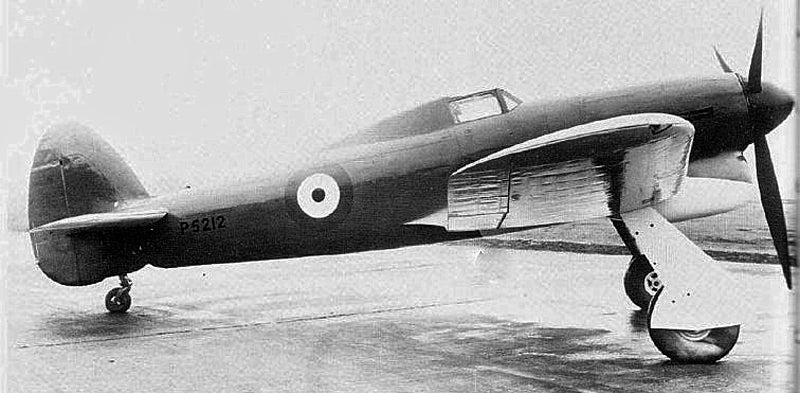
As a result, the mission of the Typhoon changed from that of a high-altitude interceptor to a low-level interceptor, a switch which played to the strengths of the Typhoon. Like the Hurricane before it, the Typhoon became a specialized bomber killer, flying high enough to attack the bombers from above, and having the speed and hitting power to knock them out of the sky. As the war in Europe progressed, the Typhoon matured as well, and truly became a work in progress. As the needs of the RAF changed, the Typhoon changed with it, and many new features and redesigns made their way into production or as retrofits in the field. The original solid cockpit with side door and cranking window gave way first to a clear canopy with added rearward visibility, then to a bubble canopy, the 12 machine guns gave way to four 20mm cannons, and provisions were made to carry greater external loads. Having proven itself an effective interceptor, the Typhoon found its greatest strength as a ground attack aircraft. Already potent with its cannons, the Typhoon was capable of carrying two 1,000 pound bombs, earning it the nickname “Bombphoon.” The addition of rockets to the Typhoon’s arsenal made it a potent tank killer in the hands of a skilled pilot, and switching between the two loads in the field was expedited by exchangeable racks. With the addition of drop tanks, Typhoons could fly as far as 1,000 miles from bases in the Netherlands and Belgium to hit enemy targets deep in France. All of this totaled up to make the Typhoon one of the most potent ground attack aircraft in the war. Following the war, the Typhoons were quickly relegated to the scrap pile, and it was thought that not a single example of the more than 3,300 aircraft produced survived the axe. However, a single aircraft was discovered in a crate in the collection of the Smithsonian Air and Space Museum. Following a trade for a Hawker Hurricane, sole remaining Typhoon now resides in the collection of the Royal Air Force Museum London.
(UK Government photos)
!!! UNKNOWN CONTENT TYPE !!!

February 24, 1935 – The first flight of the Heinkel He 111. At the end of the First World War, Germany was saddled with the the Treaty of Versailles , whose many provisions were designed to prohibit Germany’s future capability to wage war (ironically, it was that very same treaty that many point to as the main cause for the Second World War). Among those provisions was one that forbade Germany from producing military aircraft. But once Adolf Hitler assumed the role of German Chancellor in 1933, he immediately set about rebuilding the German Luftwaffe, though he did so in secret. New pilots were trained in Russia, and new bombers were designed ostensibly as civilian airliners. One of the more famous aircraft to come out of this skirting of the rules was the Heinkel He 111, and it traces its development back to the early 1930s, when Ernst Heinkel , head of Heinkel Flugzeugwerke , wanted to build the world’s faster passenger plane. He had two of his designers, the twin brothers Siegfried and Walter Günter , develop the Heinkel He 70 Blitz , a 4-passenger, single engine aircraft with elliptical wings that set numerous speed records. But in order to compete with American designs such as the Boeing 247 and Douglas DC-2 , Heinkel needed a larger aircraft. So he had the Günter brothers develop a twin-engine version of the Blitz, which was called the Doppel-Blitz (Double Blitz), and this is the aircraft that became the wartime He 111. A sleek, aerodynamic design meant for high speed, the He 111 is known for its bullet-shaped nose, a regular feaure in many Germain bomber designs. However, the original He 111 had a traditional stepped cockpit, and it had the appearance of high speed even when sitting still.
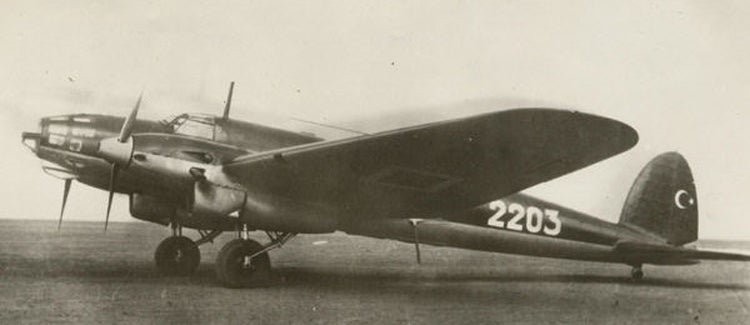
Development of the He 111 continued under civilian registrations, and the first prototype of the He 111 received recognition as “the fastest passenger aircraft in the world” when its speed exceed 250 mph. Ultimately, Lufthansa operated 12 He 111s on routes throughout Europe and even as far as South Africa. Following the German design ethos of the time, the He 111 was powered by a pair of
Junkers Jumo 211
inverted, liquid-cooled V-12 engines which gave the bomber a top speed of 273 mph. In its military guise, defensive machine guns were mounted in the nose and in dorsal and ventral blisters, and up to 4,400 pounds of bombs could be carried internally. Using external hard points, nearly 8,000 pounds of bombs could be carried, but this made the 111 so heavy that it required rockets to assist with takeoff. Though the civilian airliner found reasonable success, it is as a bomber that the He 111 is best known, becoming one of the iconic aircraft of WWII. The 111 flew its first combat missions during the
Spanish Civil War
(1936-1939), where Germany used the Spanish conflict as a test for its budding air force and developing the tactics of air support for ground troops. The He 111 flew in support of the Nationalist government, most famously (or infamously) in the
bombing
of the city of Guernica, one of the first times bombs were dropped on a defenseless civilian population. Based on experiences in Spain, and the ability of the He 111 to outrun all Spanish fighters of the time, Heinkel believed that the minimal defensive armament on the 111 would sufficient in the coming war. However, during the
Battle of Britain
in 1940, the He 111 began to show its vulnerability. Though fast when it was first built, it was no match for the faster British fighters, nor was it very maneuverable. And its light defensive armament made it a relatively easy target for British guns. But, with no new bomber to take its place, the He 111 soldiered on, and served throughout the war on all fronts, though it was essentially obsolete by 1942. Still, the He 111 was constantly upgraded and modified until production ended in 1944. And it proved to be an extremely versatile aircraft. The 111 served as a torpedo bomber, troop transport, reconnaissance aircraft, pathfinder (target marker), and glider tug. It was even modified to carry out aerial launches of the
V-1 flying bomb
. Ultimately, more than 6,500 civilian and military 111s were produced and, following the war, an upgraded version of the He 111 continued to be built under license in Spain as the
CASA 2.111
. Powered by
Rolls-Royce Merlin
engines, some of these aircraft operated into the early 1970s.
(Bundesarchiv photo via
Wikimedia Commons
; photo author unknown)
!!! UNKNOWN CONTENT TYPE !!!
!!! UNKNOWN CONTENT TYPE !!!
!!! UNKNOWN CONTENT TYPE !!!
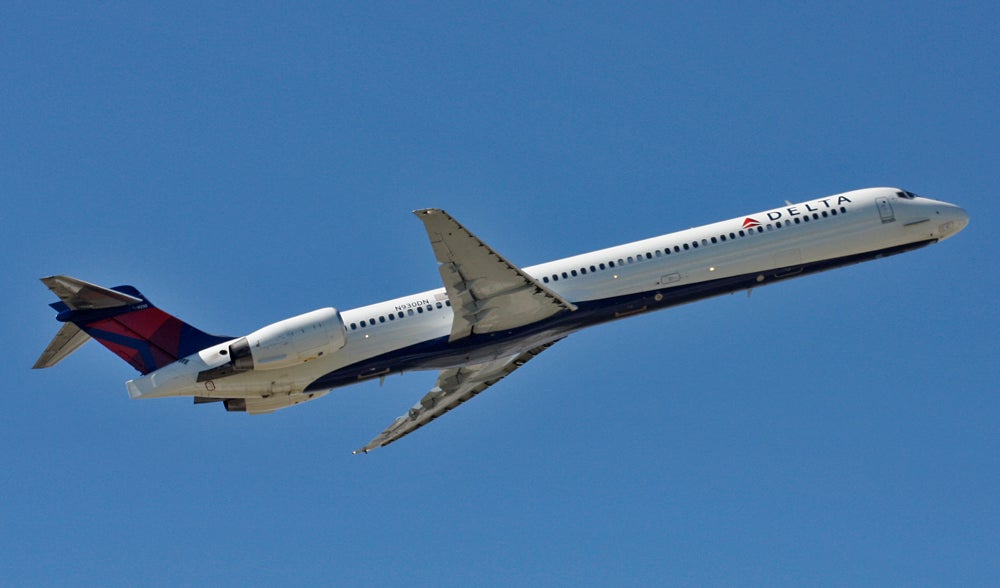
February 22, 1993 – The first flight of the McDonnell Douglas MD-90. Following the success of the McDonnell Douglas MD-80 series of airliners, which was based on the earlier Douglas DC-9 , the MD-90 was a logical growth of the basic airliner configuration which lengthened the fuselage and employed more fuel-efficient engines. The MD-90 is 5 feet longer than the MD-88 and is fitted with quieter International Aero Engines V2500 high-bypass turbofan engines providing greater range and decreased fuel consumption, and the flight deck includes an electronic flight instrument system and LED displays. The MD-90 entered service in 1995 with Delta Airlines and can seat up to 172 passengers in a single-class configuration. Production of the MD-90 ended in 2000 after a total of 116 were built, with the last airliner delivered to Saudi Arabian Airlines. (Photo by the author)
!!! UNKNOWN CONTENT TYPE !!!
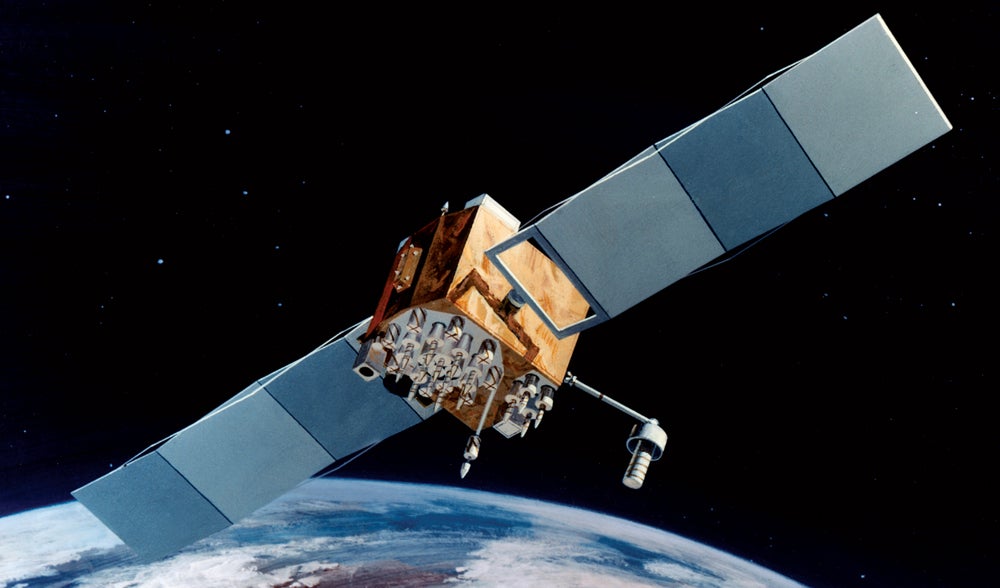
February 22, 1978 – The launch of OPS 5111 (also known as Navstar-1), the first satellite in the Global Positioning System. The Global Positioning System (GPS) is made up of 24 satellites positioned in six Earth-centered orbital planes, each orbiting the Earth twice a day. Available in all weather conditions, the system provides location within 2 meters and time information at any point on the Earth’s surface where there is unobstructed line of sight to any four satellites. Based on the US military program called NAVSTAR, which stands for Navigation System Using Timing and Ranging, GPS was initially intended for military use only, but the system was opened to the public by President Ronald Reagan following the shoot down of Korean Air Lines Flight 007 in 1983. (US Air Force illustration)
!!! UNKNOWN CONTENT TYPE !!!
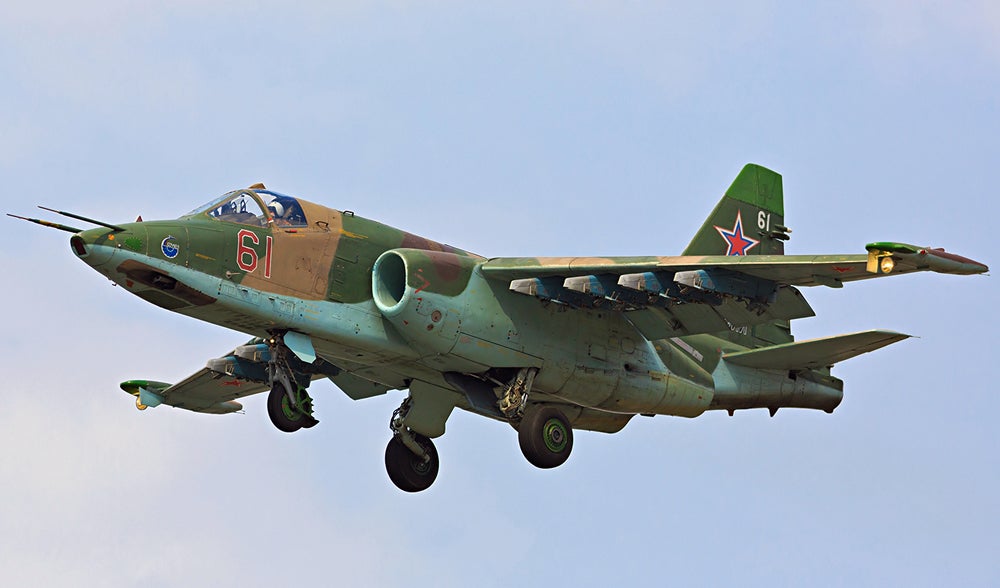
February 22, 1975 – The first flight of the Sukhoi Su-25. The Su-25, NATO reporting name Frogfoot , is a close air support aircraft developed in the late 1960s to support Soviet ground forces. Inspired by the Ilushin Il-2 Sturmovik tank buster of WWII, the Su-25 is analogous in mission to the Fairchild Republic A-10 Thunderbolt II , and entered service in July 1981 during the Soviet invasion of Afghanistan . Armed with a single GSh-30-2 30mm cannon and capable of carrying 8,800 pounds of external stores, the Su-25 has seen action in many conflicts during its 35 years of service, including recent missions in support of the Assad regime in the Syrian Civil War . The Su-25 has been produced in numerous variants, including a two-seat trainer version, and has received continuous upgrades in avionics and weapons capabilities. Over 1,000 have been built to date, and the Su-25 remains in production. (Photo by Fedor Leukhin via Wikimedia Commons )
!!! UNKNOWN CONTENT TYPE !!!

February 22, 1974 – US Navy LTJG Barbara Ann Allen becomes the first female aviator in the US Armed Forces and the first woman to be qualified as a military jet pilot
. Allen and seven other female classmates entered US Naval Flight Training School on March 2, 1973 and Allen was the first in her class to be awarded her wings. She was first certified to fly the
Grumman C-1 Trader
, then became the first jet qualified female pilot when she was certified to fly the
North American T-39 Sabreliner
. After marrying, she entered the Naval Reserves, where she qualified on the
R6D (Douglas DC-6)
. In 1977, due to a shortage of instructor pilots, Rainey returned to active duty as an instructor on the
Beechcraft T-34 Mentor
. She was killed in a training crash on July 13, 1982 while practicing touch-and-go landings with a student pilot.
(US Navy photo)
!!! UNKNOWN CONTENT TYPE !!!
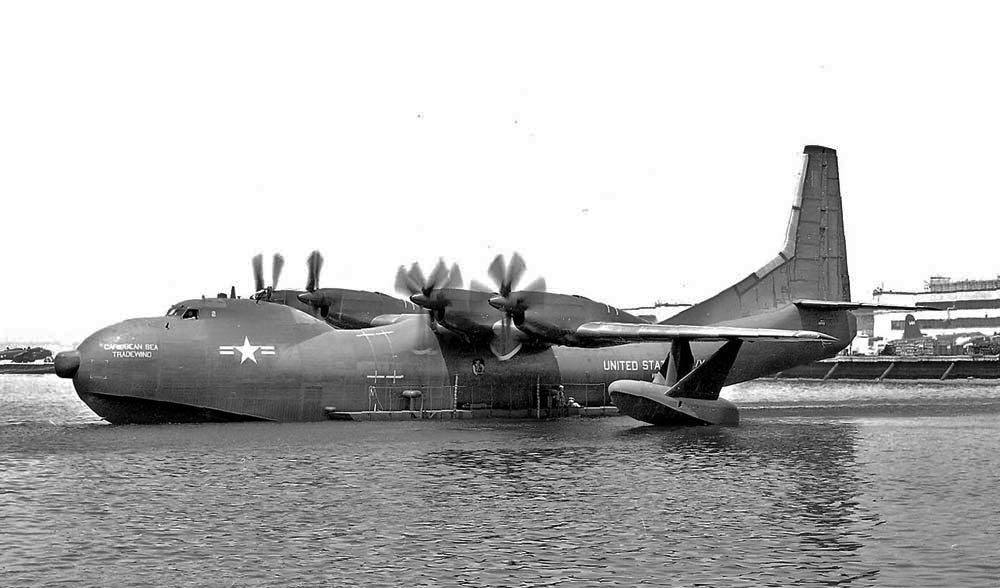
February 22, 1954 – The first flight of the Convair R3Y Tradewind, a turboprop-powered flying boat developed by Convair to take advantage in postwar advances in construction and engine technologies. The Tradewind featured a laminar flow wing and was powered by four Allison T-40 turboprops turning six-bladed contra-rotating propellers. With a hinged nose that allowed loading of large cargo, the Tradewind served as a strategic airlifter, and also performed transport duties for the US Navy. Six aircraft were converted to the R3Y-2, an aerial refueling aircraft capable of refueling 4 aircraft at once. Only 13 Tradewinds were built, and the program was canceled after continued problems with the Allison engines caused a number of fatal crashes due to engine failure. All the remaining aircraft were grounded in 1958 and eventually scrapped. (Photo by Bill Larkins via Wikimedia Commons )
!!! UNKNOWN CONTENT TYPE !!!
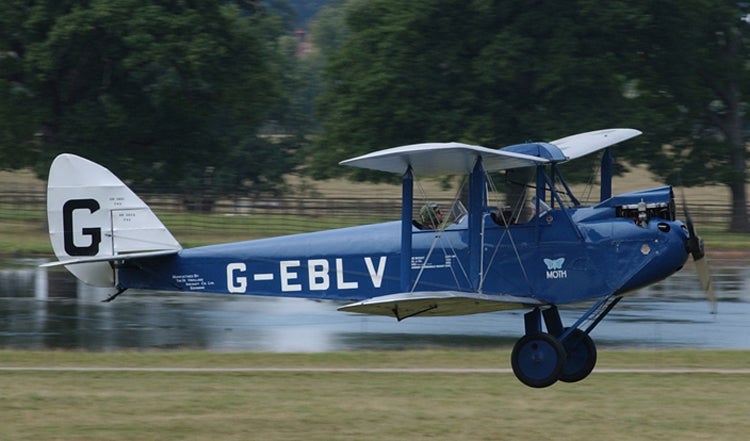
February 22, 1925 – The first flight of the de Havilland DH.60 Moth, a two-seat touring and training biplane developed by Geoffrey de Havilland from the larger, three-seat de Havilland DH.51 biplane. The DH.60 was the first in a long line of derivative aircraft and saw extensive use by British flying clubs. One of the reasons for its popularity was the unique feature of folding wings to allow storage in smaller hangars. The Moth also served as a military trainer, with the RAF eventually flying a total of 124 DH.60M (Metal Moth) variants that featured a metal fuselage. The Moth served much more widely with foreign air forces, where it served as a primary flight trainer, seeing export sales to 31 countries. With the addition of a more powerful de Havilland Gipsy 4-cylinder engine, it became known as the Gipsy Moth, and others were fitted with floats for use as a seaplane. (Photo by Steven Byles via Wikimedia Commons )
!!! UNKNOWN CONTENT TYPE !!!
!!! UNKNOWN CONTENT TYPE !!!
February 23, 2008 – A Northrop Grumman B-2 Spirit bomber crashes at Andersen Air Force Base in Guam. The B-2 Spirit belonging to the 393rd Bomb Squadron, 509th Bomb Wing based at Whiteman Air Force Base in Missouri experienced an uncommanded 30-degree nose-high pitch up during takeoff which led to a stall and crash of the $1.4 billion bomber. Both crew members ejected; the pilot was uninjured, but the co-pilot suffered a spinal compression fracture from the ejection. The cause of the crash was traced to moisture that collected in the air data sensors following a night of heavy rain that gave the flight computer incorrect altitude and windspeed data. It remains the only crash of the B-2 bomber, and the most expensive write off in the history of the US Air Force. (US Air Force video)
!!! UNKNOWN CONTENT TYPE !!!
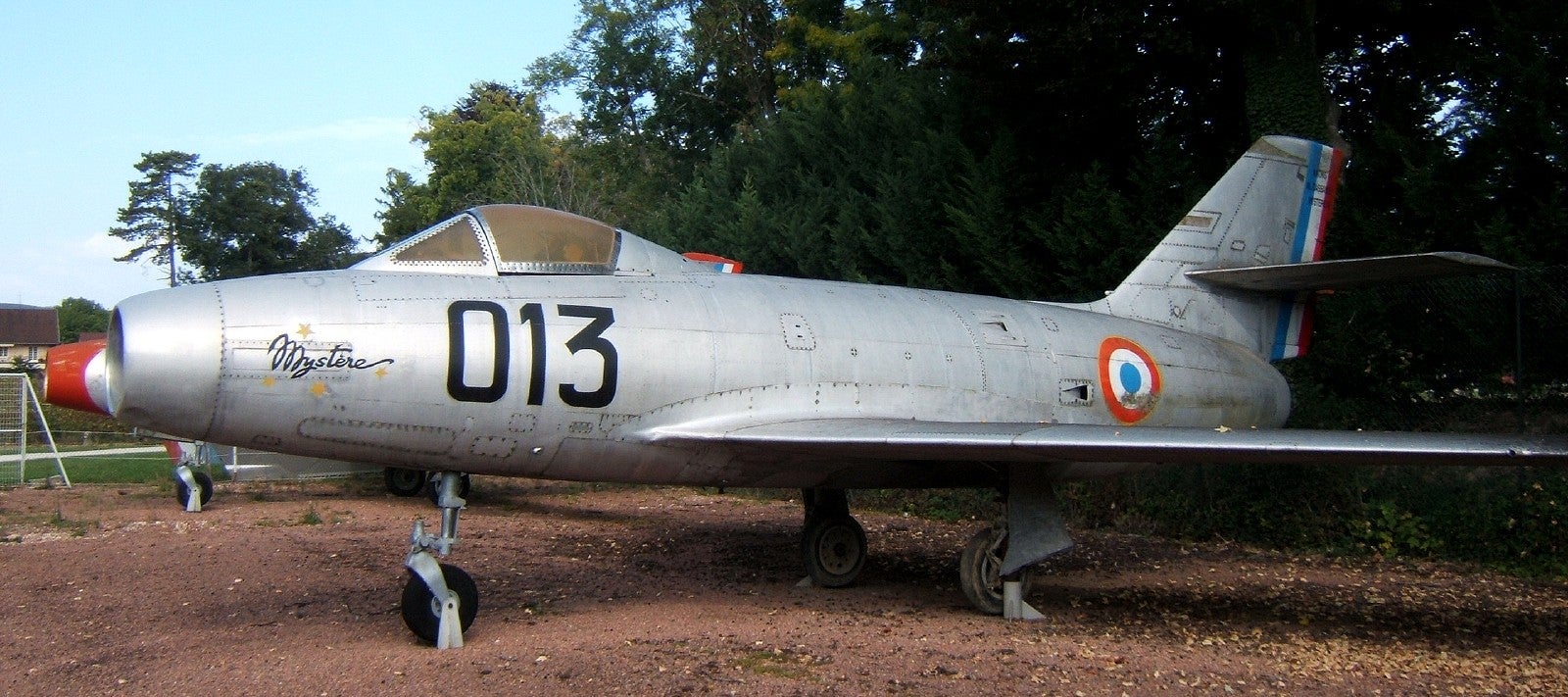
February 23, 1951 – The first flight of the Dassault Mystère, a fighter-bomber built by the French firm Dassault as a development of the earlier Dassault Ouragan . Dassault took the earlier fighter and essentially changed the design by the addition of a 30-degree swept wing. Prototypes used an upgraded Rolls-Royce Tay centrifugal-flow turbojet in place of the Rolls-Royce Nene of the Ouragan, while production models of the Mystère were powered by a SNECMA Atar 101 axial-flow turbojet. Armed with two 30mm cannons, rocket pods and up to 2,000 pounds of bombs, the Mystère entered service with the French Air Force in 1954, though it never saw combat. Nevertheless, the Mystère was an important step in the development of modern French jet fighters. (Photo by Groumfy69 via Wikimedia Commons )
!!! UNKNOWN CONTENT TYPE !!!
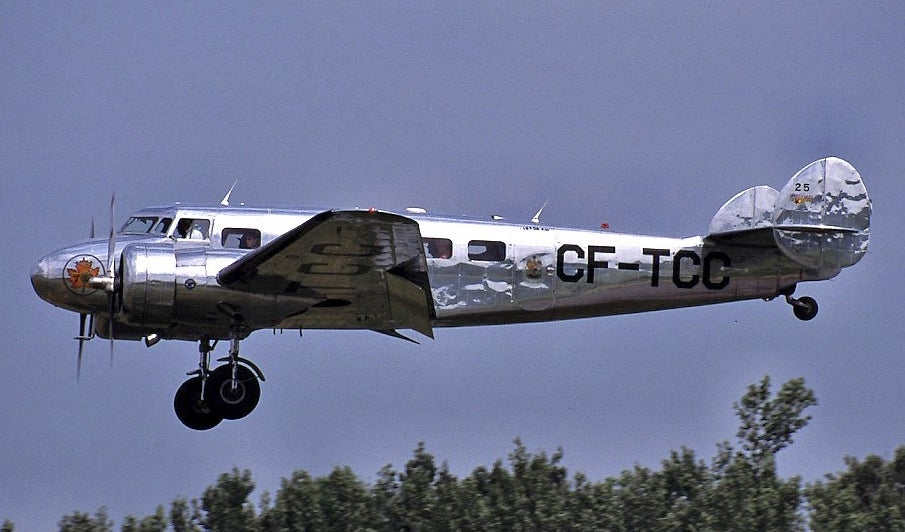
February 23, 1934 – The first flight of the Lockheed Model 10 Electra, Lockheed’s first twin-engine, all-metal monoplane airliner that was developed from the single engine Lockheed Model 9 Orion to compete with the Boeing 247 and Douglas DC-2 . The Model 10 suffered from early problems with stability, problems that were solved by a brilliant young engineer named Clarence “Kelly” Johnson , who would later lead Lockheed’s famous Skunk Works . Following the US ban on single-engine passenger aircraft, the Electra became one of the more popular new aircraft with the budding airline industry, and many Electras were also flown by private pilots, including Amelia Earhart . Earhart was flying an Electra when she disappeared during her attempt to circumnavigate the globe. A total of 149 Model 10s were produced. (Photo by John Davies via Wikimedia Commons )
!!! UNKNOWN CONTENT TYPE !!!
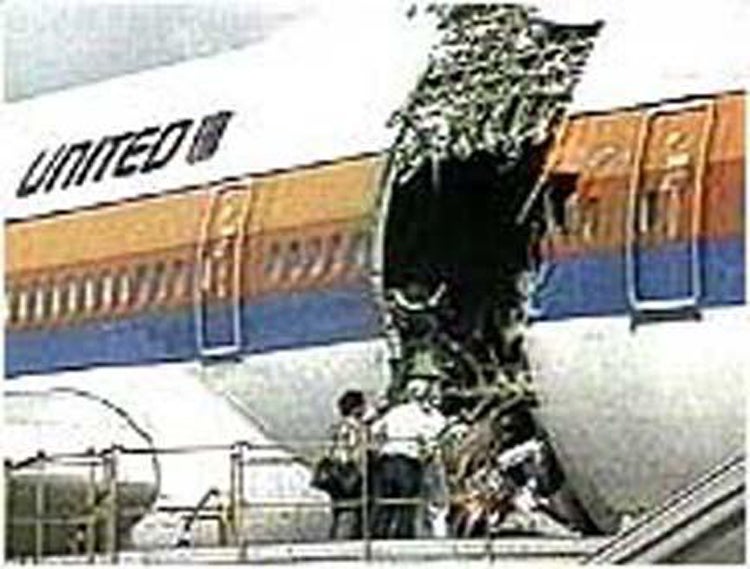
February 24, 1989 – The forward cargo door blows off of United Airlines Flight 811 in flight. UAL 811 was a regularly scheduled Boeing 747-122 flight that took off from Honolulu, Hawaii bound for Auckland, New Zealand when the forward cargo hatch, which had been improperly closed, blew off while passing between 22,000 and 23,000 feet. As the door broke off, it took a large section of the cabin wall with it, and the ensuing explosive decompression caused the floor to buckle and sucked 10 seats and 8 passengers out of the aircraft. The ensuing investigation found that damaged locking pins on the door gave a false reading of the door’s being shut properly. Both United and the ground crew were faulted, and the locking mechanism was redesigned. (NTSB photo)
!!! UNKNOWN CONTENT TYPE !!!
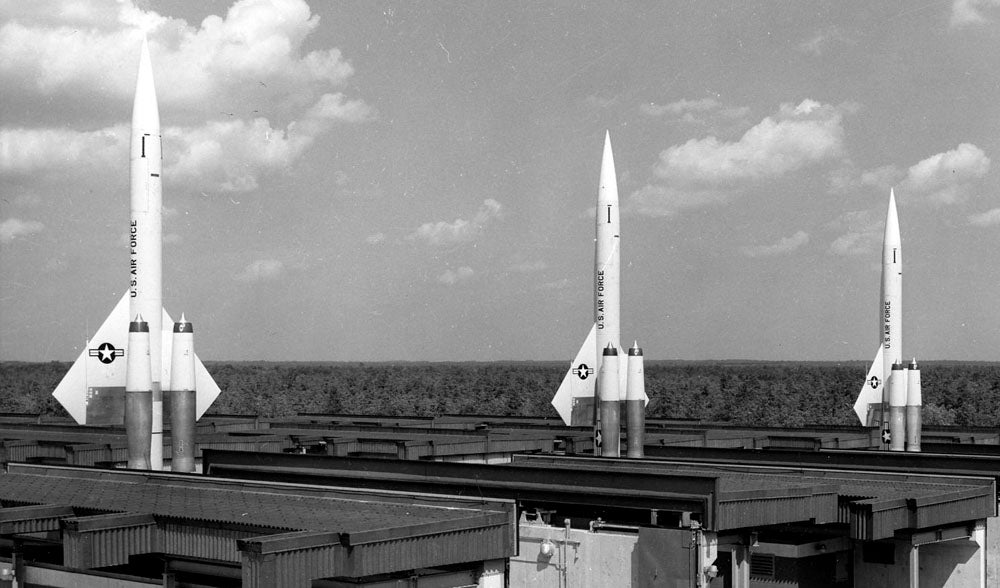
February 24, 1955 – The first flight of the CIM-10 BOMARC surface-to-air missile,
a long-range supersonic surface-to-air missile fielded by the United States during the
Cold War
for the defense of North America against attacking nuclear bombers. The BOMARC (an acronym of
Boeing
and
Michigan Aerospace Research Center
) had an operational radius of 200 miles, was designed to fly at Mach 2.5-2.8 at 60,000 feet, and could be armed with either a conventional or nuclear warhead. The USAF ultimately set up 16 BOMARC sites armed with 56 missiles each. With the advent of the intercontinental ballistic missiles, attacking bombers were no longer perceived as a threat, and the BOMARC was retired in 1972.
(US Air Force photo)
!!! UNKNOWN CONTENT TYPE !!!
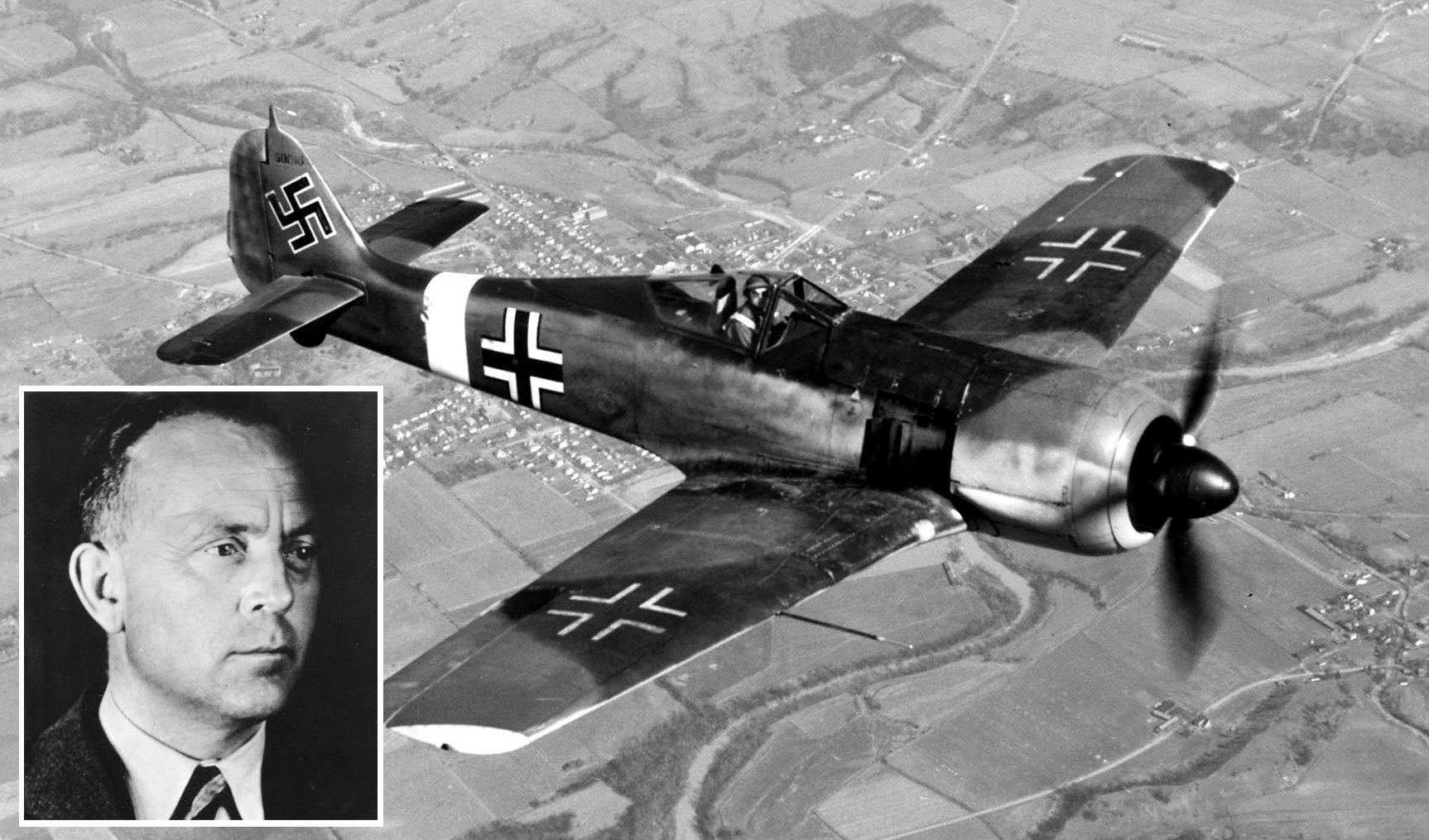
February 24, 1898 – The birth of Kurt Tank,
a German aeronautical engineer and test pilot who headed the design department of
Focke-Wulf
from 1931-1945. After working for
Albatros Flugzeugwerke
following WWI, Tank began working for Focke-Wulf when
Albatros
went bankrupt and merged with Focke-Wulf. In 1931, Tank oversaw the development of the
Fw 200 Condor
, a long-range airliner that was developed into a maritime patrol bomber, and was best known for his development of the
Fw 190
, one of the best fighters of WWII. Following the war, Tank moved to Argentina where he worked at the
Instituto Aerotécnico
, and later worked in India, where he designed the
Hindustan Aeronautics HF-24 Marut
, the first jet developed in India and the first Asian jet fighter to enter production. Tank died in Munich on June 5, 1983.
(Tank photo: Bundesarchiv via
Wikimedia Commons
; Fw 190 photo via US Air Force)
!!! UNKNOWN CONTENT TYPE !!!
!!! UNKNOWN CONTENT TYPE !!!
!!! UNKNOWN CONTENT TYPE !!!
!!! UNKNOWN CONTENT TYPE !!!
!!! UNKNOWN CONTENT TYPE !!!
!!! UNKNOWN CONTENT TYPE !!!
!!! UNKNOWN CONTENT TYPE !!!
If you enjoy these Aviation History posts, please let me know in the comments. And if you missed any of the past articles, you can find them all at Planelopnik History . You can also find more stories about aviation and aviators at Wingspan and Planes You’ve (Probably) Never Heard Of .
!!! UNKNOWN CONTENT TYPE !!!
 "RamblinRover Luxury-Yacht" (ramblininexile)
"RamblinRover Luxury-Yacht" (ramblininexile)
02/24/2017 at 12:45, STARS: 2
Kurt Tank gets overlooked too often. Very good condensed blurb.
I had no idea the Typhoons were scrapped en masse, nor that the original spec had been for 12 .303s.
 "Highlander-Datsuns are Forever" (jamesbowland)
"Highlander-Datsuns are Forever" (jamesbowland)
02/24/2017 at 12:48, STARS: 0
Last week I flew from SLC to SFO on an MD-95 and the safety card said Boeing 717. I had to double take. Also flew on a very new A320 from FCA to SLC and the window trim was falling off and half the reading lights didn’t work, reminded me of a 15 year old audi.
 "whoarder is tellurium" (whoarder)
"whoarder is tellurium" (whoarder)
02/24/2017 at 12:54, STARS: 2
Rise of the Scarebus and the fall of the DC-9 family.
Also, those BOMARC missiles look so freakin awesome.
 "Smallbear wants a modern Syclone, local Maple Leafs spammer" (smallbear94)
"Smallbear wants a modern Syclone, local Maple Leafs spammer" (smallbear94)
02/24/2017 at 12:57, STARS: 1
Re the Electra: That first flight wasn’t exactly smooth as silk. It was all good until they were ready to land... and one side of the main gear wouldn’t come down. All in-flight attempts to fix it failed, including punching a hole in the side of the cabin into the wing and trying to push it. In the end they landed at another airport with better fire equipment. Perfect one-wheeler, no injuries to crew or aircraft except a scraped up wingtip.
Fun Fact re Kurt Tank: The top dog at Lufthansa at the time he proposed the Condor asked if Tank could have the prototype ready in two years. Tank bet him a case of champagne he could do it in one. He lost... but only by a matter of days. A little less than two weeks iirc.
 "facw" (facw)
"facw" (facw)
02/24/2017 at 13:01, STARS: 0
Aren’t the MD-95 and the Boeing 717 the exact same aircraft? My understanding is that Boeing bought out MD prior to any MD-95s being completed, so all of them were officially 717s.
 "Highlander-Datsuns are Forever" (jamesbowland)
"Highlander-Datsuns are Forever" (jamesbowland)
02/24/2017 at 13:05, STARS: 0
Yes!
 "ttyymmnn" (ttyymmnn)
"ttyymmnn" (ttyymmnn)
02/24/2017 at 13:17, STARS: 1
I’ve always liked the Condor. Classic plane.
 "ttyymmnn" (ttyymmnn)
"ttyymmnn" (ttyymmnn)
02/24/2017 at 13:18, STARS: 2
BOMARC: What the future looked like in 1950.
 "ttyymmnn" (ttyymmnn)
"ttyymmnn" (ttyymmnn)
02/24/2017 at 13:21, STARS: 1
Last time I flew, I did two legs, one in a 738 and one in an A319. The 738 was glorious, factory fresh, still had that new plane smell. The A319 was rickety and creaky and smelly. Of course, it was much older. But, while I rarely ever get airsick, I got queasy on both of the Airbus legs, but was fine in the Boeing.
 "ttyymmnn" (ttyymmnn)
"ttyymmnn" (ttyymmnn)
02/24/2017 at 13:22, STARS: 0
Thanks. I like how the Typhoon sucked at what it was designed for, but excelled in another job. In wartime, though, I guess you don’t really have the luxury of scrapping all the money, time and effort that went into making the plane. You’ve got to find a way to make it work, if possible.
 "ttyymmnn" (ttyymmnn)
"ttyymmnn" (ttyymmnn)
02/24/2017 at 13:38, STARS: 0
The DC-9 gets a major shout out next week.
 "whoarder is tellurium" (whoarder)
"whoarder is tellurium" (whoarder)
02/24/2017 at 13:51, STARS: 1
Excellent

02/24/2017 at 13:52, STARS: 0
Another busy stretch of history! I may not have mentioned it before, but I really look forwards to TDiAH...
I believe the Su-25 is based on stolen plans for the Northrop YA-9 , and no one will ever convice me otherwise....
I have a soft spot for the Tradewind. Like the Martin Sea Master and Convair Sea Dart , it’s a really interesting (if rather homely in this case) design that saw its niche disappear as technology passed it by, but I still would loved to have seen all of them reach operations once their respective kinks were worked out.
I understand the practical idea behind nuclear-tipped SAM s and AAMs, but it still seems like such a counter-productive and, quite frankly, daft idea:
“We’re concerned about Soviet aircraft dropping nuclear bombs on the US. We need to be able to shoot them down.”
“I’ve got it, we’ll use missiles with atomic warheads!”
“ Brilliant! ”
 "Yowen - not necessarily not spaghetti and meatballs" (yowen)
"Yowen - not necessarily not spaghetti and meatballs" (yowen)
02/24/2017 at 13:57, STARS: 0
“the He 111 continued to be built under license in Spain as the CASA 2.111 .”
Fascinating, considering it’s also known for bombing Spain.
 "ttyymmnn" (ttyymmnn)
"ttyymmnn" (ttyymmnn)
02/24/2017 at 14:08, STARS: 0
Germany was fighting on the side of Franco and the Republicans, who won the civil war, leading to 40 years of dictatorial rule in Spain. Knowing that, it makes sense that the He 111 would be produced there. Spain had been building the 111 since 1940, but the CASA 2.111 was a more modern version, and didn’t take its first flight until 1945. So, while they are related, they really aren’t the same plane. I should probably make that clearer.
 "ttyymmnn" (ttyymmnn)
"ttyymmnn" (ttyymmnn)
02/24/2017 at 14:14, STARS: 0
Thanks. While I am recycling some material, I’m spending a lot of time on tighter writing and better context. I hope it is paying off, because history is nothing without context
The thing about a nuclear SAM is that you can take down an entire formation of bombers with a single shot. While I agree that it seems daft today, it was a lot of bang for the buck back then. I think what is even more daft was the idea of a nuclear-powered bomber like the NB-36. Imagine if one of those crashed into a city, with its reactor churning away. They actually did flight tests with it, carting a reactor all around the country, but IIRC it was never operational.
 "Yowen - not necessarily not spaghetti and meatballs" (yowen)
"Yowen - not necessarily not spaghetti and meatballs" (yowen)
02/24/2017 at 15:03, STARS: 0
Ah makes sense. Thanks for writing this wonderful series!
 "ttyymmnn" (ttyymmnn)
"ttyymmnn" (ttyymmnn)
02/24/2017 at 15:08, STARS: 0
My pleasure! Thanks for reading.
 "pip bip - choose Corrour" (hhgttg69)
"pip bip - choose Corrour" (hhgttg69)
02/25/2017 at 08:28, STARS: 1
interesting about the Airbus.
“fly United , come back in pieces” as the old joke goes.